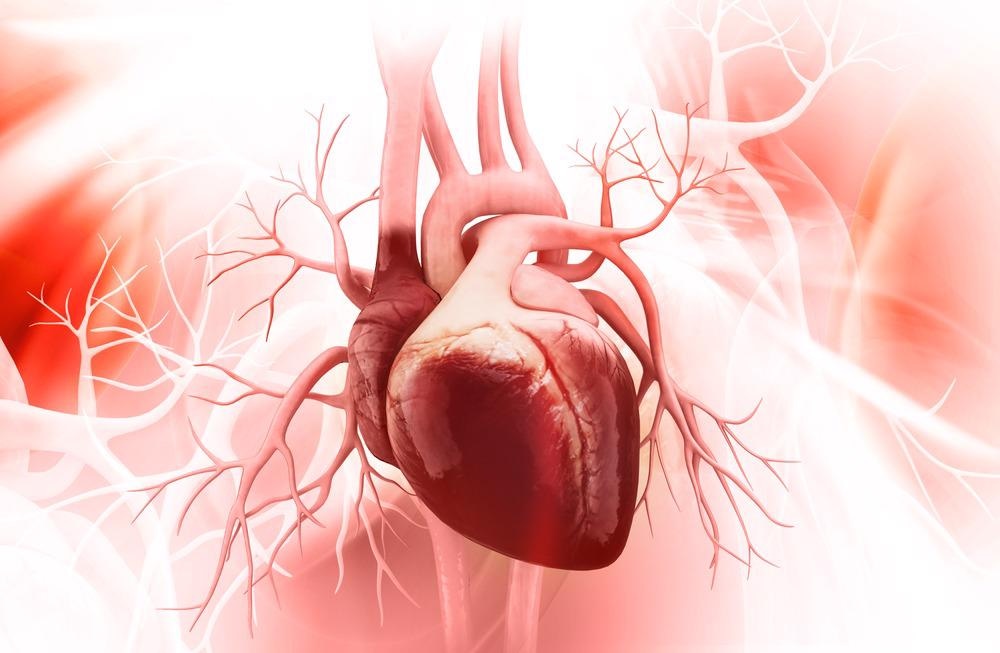Novel research on advancing heart valves has included the innovative use of carbon nanotubes modified with heparin. This pre-proof research has been submitted to the journal of Materials Chemistry and Physics and aims to alleviate the burden of heart valve replacements.

Study: Fabrication of polyurethane – Heparinized carbon nanotubes composite for heart valves application.Image Credit: Liya Graphics/Shutterstock.com
Heart Valves: What are They and Why are They Important?
There are four valves within the heart, namely, the bicuspid/mitral, tricuspid, aortic and pulmonary valves; these hold a significant role in ensuring the direction of blood flow is maintained in one direction throughout the heart chambers and backflow is prevented.
If these valves are not functioning effectively, it can affect blood flow throughout the body and these can be for reasons including, age, having congenital heart lesions, rheumatic carditis, aortic stenosis (where the valve has become narrowed) as well as aortic regurgitation (where the valve is leaky).
Dysfunction of heart valves is significant and requires replacement to ensure effective blood flow is directed to the cells in the body.
The most common type of congenital abnormality includes bicuspid aortic valves, with problems ranging from missing or having incomplete closure of aortic valves to supra-valvular stenosis.
While symptoms of this disease can be non-existent in the beginning, as the condition becomes more severe, individuals can experience chest pain, due to the heart having to work harder, shortness of breath, dizziness or lightheadedness, from the obstructed blood flow, as well as loss of consciousness.
Very severe cases can also result in heart failure.
The Problems with Conventional Heart Valve Replacements
The two most common types of heart valve replacements include mechanical and biological valves.
The former consists of synthetic materials and are made to last for several years; however, this route is associated with the formation of blood clots due to the tendency of blood sticking to the valves – this means patients are required to commit to a lifetime of taking blood-thinning medication, or anticoagulants.
Biological heart valves, which are also known as tissue valves, are usually taken from a human heart, referred to as a homograft, or from animal tissue, referred to as a xenograft. While this route has the benefit of not requiring anticoagulants, they are less durable and need replacement.
Novel Heart Valve Advancements
Innovative developments in this field over the years have included but are not limited to the use of collagen, silicone rubber as well as polyurethane.
Polyurethanes, a type of polymer, has been utilized for heart valve material and has been considered to be the best material, with natural interaction with biological systems, being resistant to clot formation and resistant to degradation.
The researchers of this particular study have identified the key component of heart valve design is the increase of fatigue life and aimed to fulfill this target through evaluating the fatigue behavior of carbon nanotubes.
Their use of carbon nanotubes is due to its remarkable physical, mechanical and thermal properties; when utilized within a composite material in the application of heart valves, they could potentially lead to positive results, especially with providing mechanical reinforcement for polymers and composites.
Additionally, other benefits of using carbon nanotubes consist of having high surface area, good flexibility, and low weight use as a catalyst base.
The inclusion of heparin, a negatively charged natural polysaccharide, was suggested to improve the efficacy of heart valve replacements and reduce the necessity of anticoagulant intake. The benefit of using heparin can be ascribed to its enhancement of hydrophilicity of modified surfaces and prevention of clot formation.
This research utilized a polyurethane-carbon nanotube nanocomposite coated with heparin in order to evaluate the optimum combination which may advance the field of heart valve replacements.
Future Outlook
While this study has developed innovation for the field of heart valves, which is necessary for the effective maintenance of healthy lives and quality of blood flow, it may still require further research.
However, the increase in heparin levels did result in a decrease in platelet aggregation, and can potentially be used for its anticlotting properties, in combination with carbon nanotubes, but this would require further testing with a large in vivo experiment to confirm the safety and efficacy of this research.
With an ageing population, the need to advance conventional heart valves is critical, especially for biological heart valve replacements which require further replacing after approximately 20 years depending on the tissue.
This is due to elderly populations being more vulnerable during surgery with the use of anaesthesia and requiring a replacement heart valve may not be possible for at-risk groups. Advancements in this field would ensure a higher quality of life for heart valve replacement patients as well as prioritize their health.
Reference
Dehghani, F., Khorasani, M. and Movahedi, M., (2022). Fabrication of polyurethane – Heparinized carbon nanotubes composite for heart valves application. Materials Chemistry and Physics, p.125819. Available at: https://doi.org/10.1016/j.matchemphys.2022.125819
Further Reading
Deverall, P., Campalani, G. and Anderson, D., (2022). Heart valve replacement.. Archives of Disease in Childhood 1985;60:1111-1112. Available at: http://dx.doi.org/10.1136/adc.60.12.1111
Heart-valve-surgery.com. (2022). Heart Valve Replacement Sugery. [online] Available at: https://www.heart-valve-surgery.com/heart-valve-replacement.php.
Hopkinsmedicine.org. (2022). Heart Valve Repair or Replacement Surgery. [online] Available at: https://www.hopkinsmedicine.org/health/treatment-tests-and-therapies/heart-valve-repair-or-replacement-surgery
Kütting, M., Roggenkamp, J., Urban, U., Schmitz-Rode, T. and Steinseifer, U., (2011). Polyurethane heart valves: past, present and future. Expert Review of Medical Devices, 8(2), pp.227-233. Available at: https://doi.org/10.1586/erd.10.79
nhs.uk. (2022). Aortic valve replacement - Why it's done. [online] Available at: https://www.nhs.uk/conditions/aortic-valve-replacement/whyitsdone/
Rajput FA, Zeltser R. Aortic Valve Replacement. [Updated 2021 Jul 31]. In: StatPearls [Internet]. Treasure Island (FL): StatPearls Publishing; Available from: https://www.ncbi.nlm.nih.gov/books/NBK537136/
Disclaimer: The views expressed here are those of the author expressed in their private capacity and do not necessarily represent the views of AZoM.com Limited T/A AZoNetwork the owner and operator of this website. This disclaimer forms part of the Terms and conditions of use of this website.